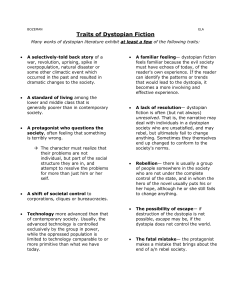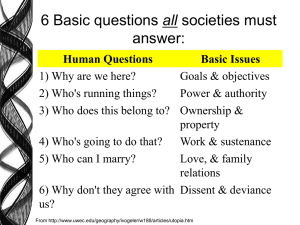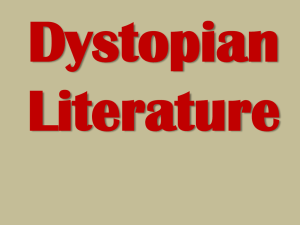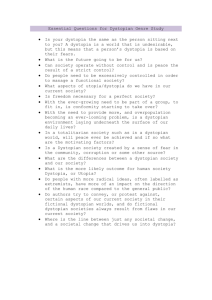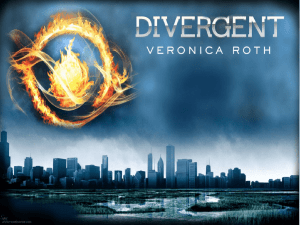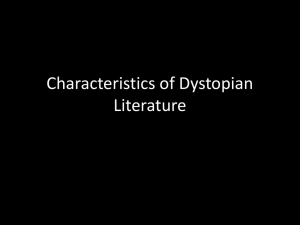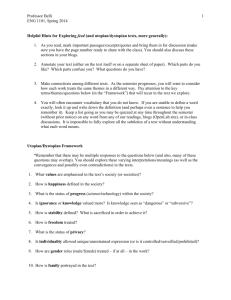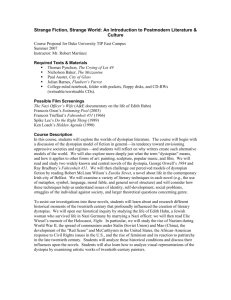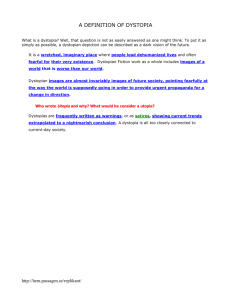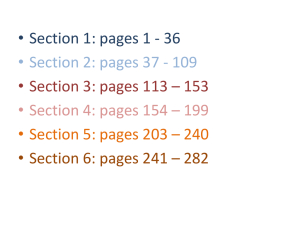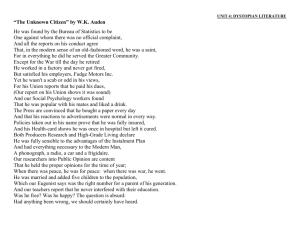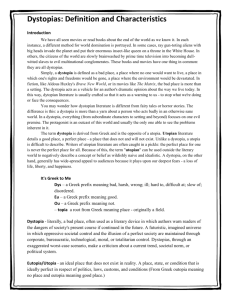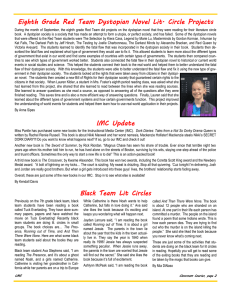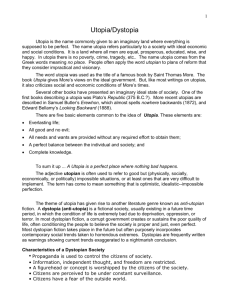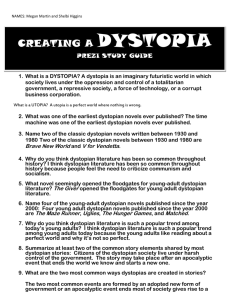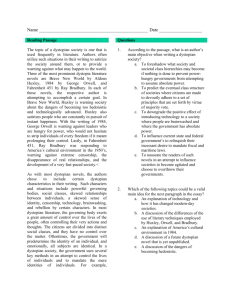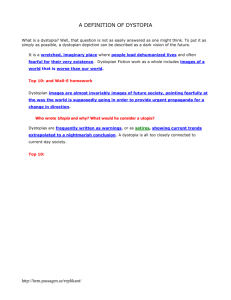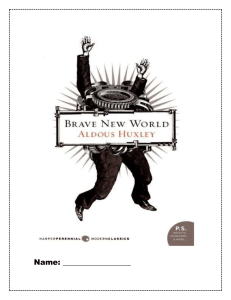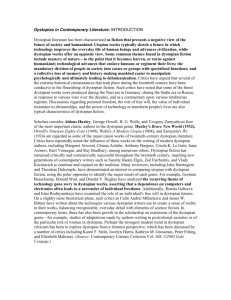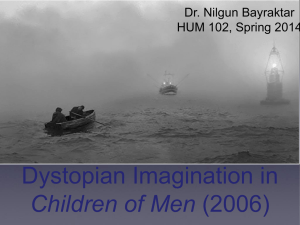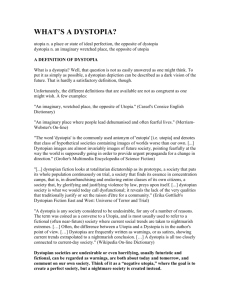Dystopian Literature: A Study and Comparison of
advertisement
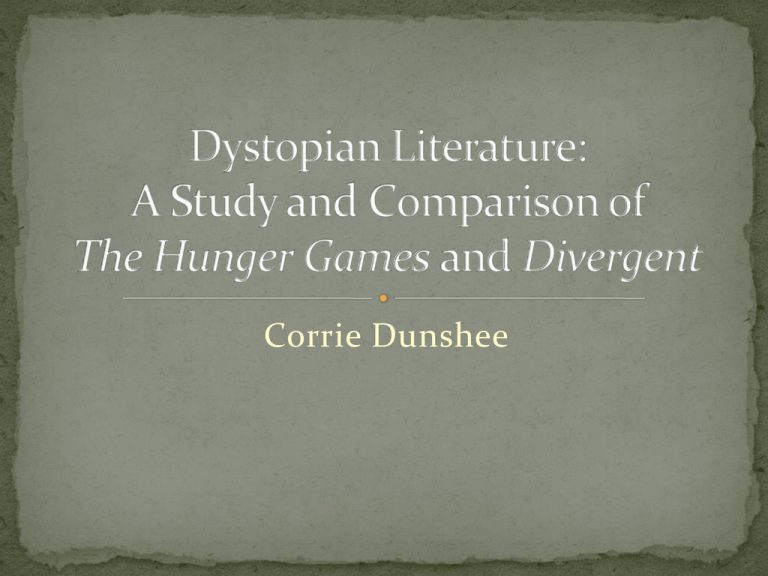
Corrie Dunshee What dystopian elements are portrayed and how are they used in The Hunger Games? How are dystopian elements portrayed or used in Divergent? How are The Hunger Games and Divergent similar? What is the new dystopian genre? “Literature written for young people ages 11 to 18 and books marketed as ‘young adult’ by a publisher” (4) Traditionally identified as “problem novels” and coming-of-age novels Comes from the POV of a teenager; reflects interpretation of events and people The protagonist’s actions and decisions are major factors in the plot’s outcome The events and problems in the plot are related to teenagers, and the dialogue reflects their speech Depiction of a future place, based on technology and describe planned environments, whose people live in fearful, wretched conditions (69) Warns against the potential negative consequences of complete utopianism (3) People Divided into Groups Platonic or Romantic Relationship Media Manipulation and Propaganda Measures to Cover Up Flaws and Lies in a Society People Divided into Groups Platonic or Romantic Relationship Pressure to Conform Measures to Cover Up Flaws and Lies in Society 16-year-old female narrators People Divided into Groups Platonic or Romantic Relationship Measures to Cover up Flaws and Lies in Society 1930s – 60s: Fear of the State (controlling governments and loss of freedoms) Grownup ones are grimmer 1984/Brave New World: detail the consequences of political authoritarianism and feckless hedonism Show readers how terrible things will become if deplorable behavior goes unchecked Young Adult Explosion: Romance (tough heroines and anti-conformist) Centered more on young adult audience About what is happening right this minute More hand-to-hand combat Experience of growing up under nearly continuous adult supervision Same purpose: warn about dangers of some current trend Dr. Kelly Sassi Dr. Amy Rupiper Taggart You Bach, Jacqueline, Laura Hensley Choate, and Bruce Parker: “Young Adult Literature and Professional Development.” Theory into Practice 50.3 (2011): 198-205. Web. Booker, M.K. Dystopian Literature: A Theory and Research Guide. Westport: Greenwood, 1994. Print. Bushman, John H., and Kay Parks Haas. “Young Adult Literature: A Brief History.” Using Young Adult Literature in the English Classroom: 3rd edition. Columbus: Merrill Prentice Hall, 2001. 263-273. Print. Claeys, Gregory. “News from Somewhere: Enhanced Sociability and the Composite Definition of Utopia and Dystopia.” History 98.330 (2013): 145-173. Web. Dima-laza, Stăncuţa R. “A Dystopian Society or the Moral Decay of Humanity.” Societate Şi Politică 5.1 (2011): 41-54. Web. Hayn, Judith A., Jeffrey S. Kaplan, and Amanda Nolen. “Young Adult Literature Research in the 21st Century.” Theory into Practice 50.3 (2011): 176-181. Web. Koss, Melanie D., and William H. Teale. “What’s Happening in YA Literature? Trends in Books for Adolescents.” Journal of Adolescent & Adult Literacy 52.7 (2009): 563-572. Web. Miller, Laura. “Fresh Hell: What’s behind the boom in dystopian fiction for young readers?” The New Yorker. (2010). Web. Scholes, Justin and Jon Ostenson. “Understanding the Appeal of Dystopian Young Adult Fiction.” The Alan Review (2013): 11-20. Print. Tomlinson, Carl M., and Carol Lynch-Brown. Essentials of Young Adult Literature: Second Edition. Boston: Pearson, 2010. Print. Zdilla, Gail. “The Appeal of Young Adult Literature in Late Adolescence: College Freshman Read YAL.” Young Adult Literature and Adolescent Identity Across Cultures and Classrooms: Contexts for the Literary Lives of Teens. Ed. Janet Alsup. New York: Routledge, 2010. 191-203. Print. Minott-Ahl, Nicola. Dystopia in Vanity Fair: The Nightmare of Modern London. Web. 11 Dec. 2013. The Hunger Games: Dystopian Timeline From ‘Nineteen Eighty-Four to Now. Huffington Post. 23 Mar. 2012. Web. 11 Dec. 2013. Utopia and Dystopia. 11 Dec. 2013
